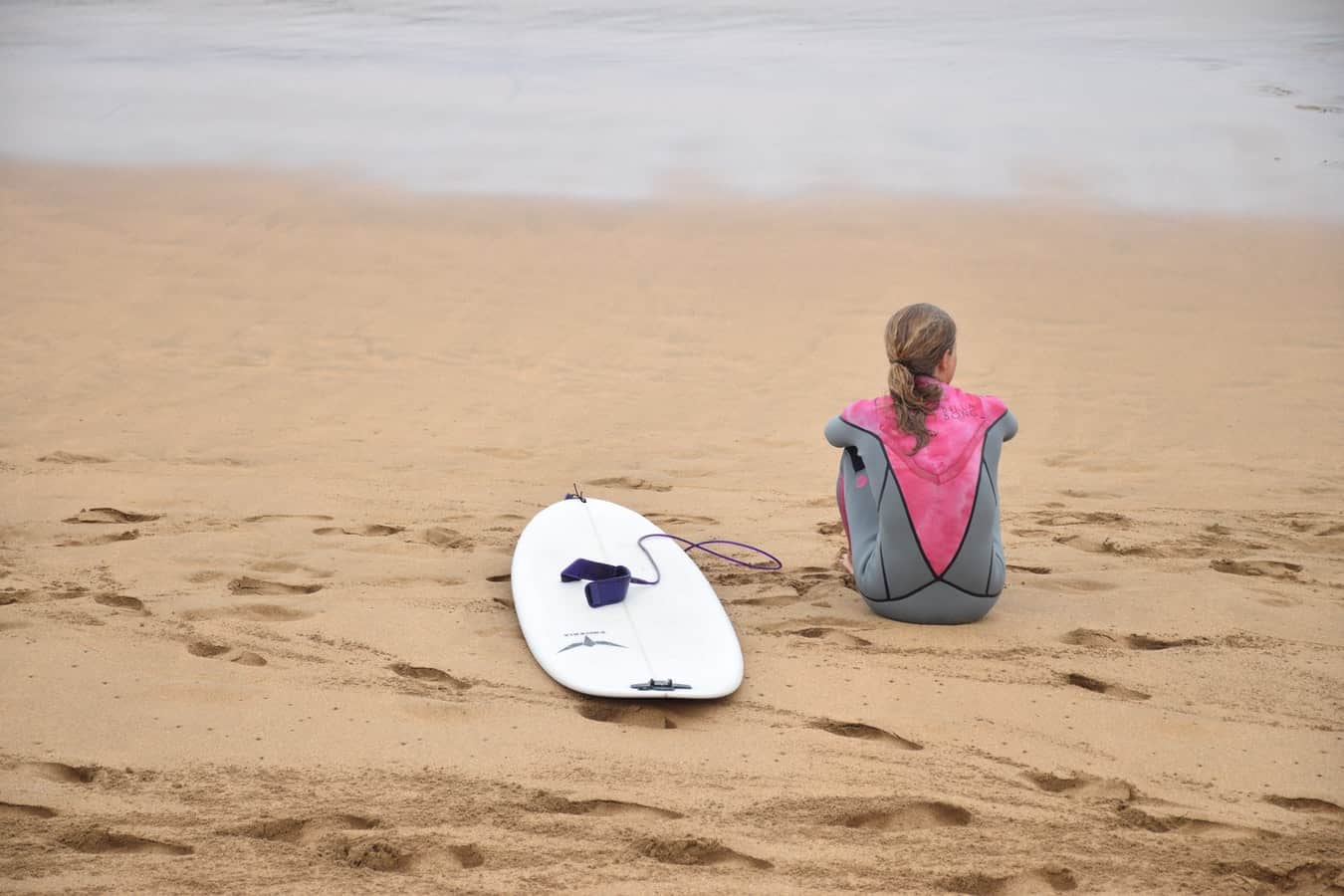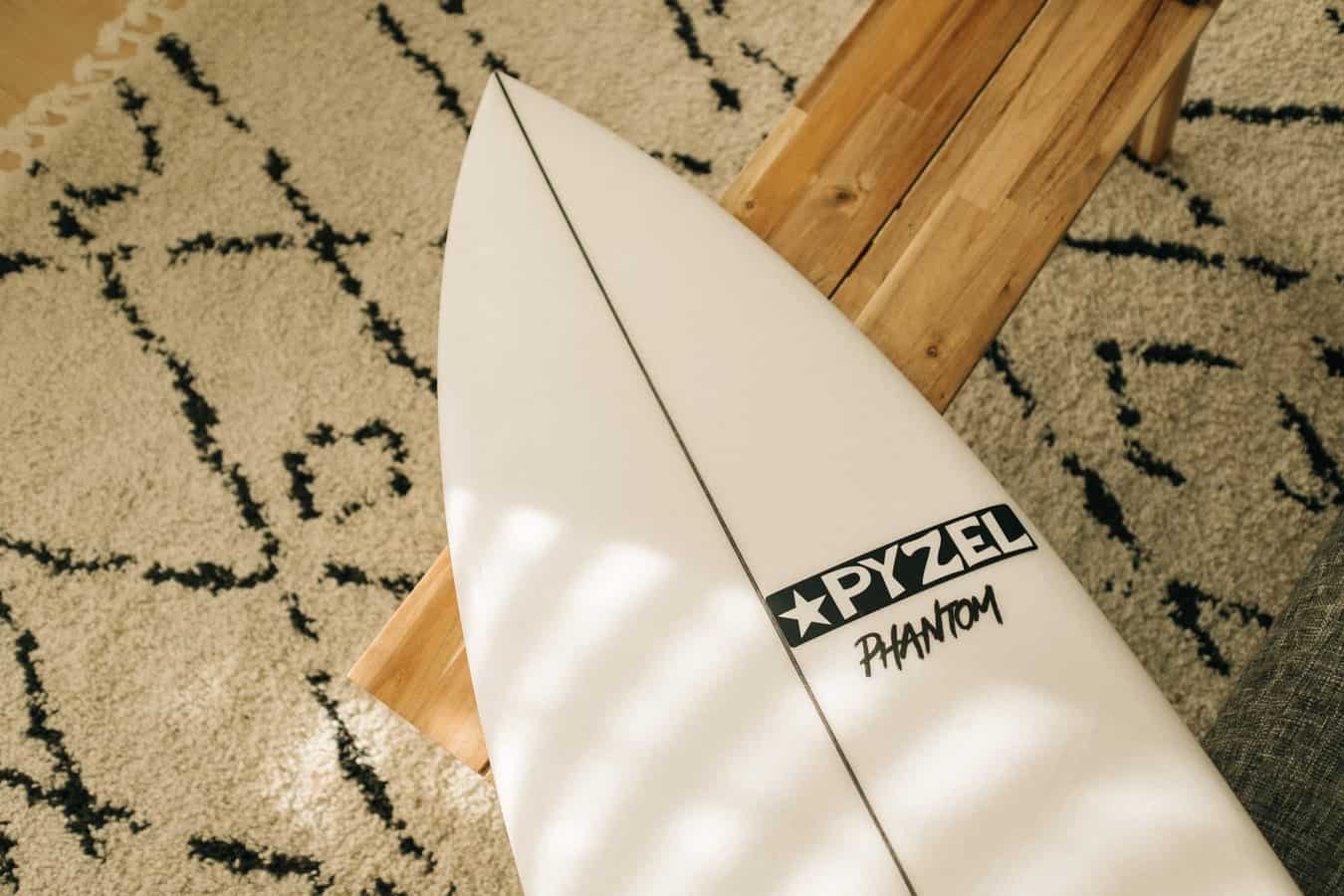The surfing lifestyle seems idyllic: waking in the morning and driving to the ocean, laying your surfboard in the water, and spending a day riding waves. But most surfers know that the reality is far different. An investment in equipment – a surfboard, clothing, a wetsuit, wax, and general maintenance are needed before we can even set foot in the ocean. We present here the true cost of owning a surfboard and what you need to invest in time and effort to catch waves and have the time of your life surfing.
How much does a surfboard cost? Surfboards can run anywhere from $150.00 to $1200.00, depending on whether you buy a shortboard, longboard, or soft top surfboard.
The cost is further impacted by whether it’s a used board or a new one. But the true cost of owning a surfboard is more than that. Not only does the board need to be waxed regularly, but you’ll need to wax the board regularly as well as buy accessories such as traction pads, a ding and crack repair kit, a leash, and a surfboard bag.
What Goes Into Making A Surfboard?
There are two different types of surfboards: those made from polyurethane foam and those that use epoxy in their construction. Those made with polyurethane foam are referred to as “poly boards.” These boards are the traditional way of making surfboards. Up until 2005, most surfboards were made using polyurethane foam and a wood stringer that was placed through the center to reinforce the board and prevent it from splitting. However, in 2005, the manufacturer Clark Foam, who supplied 80% of the polyurethane foam to make a surfboard, closed its doors leaving surfboard manufacturers in the lurch, requiring them to come up with new ways to make boards.
Poly boards are heavier than other boards, yet many surfers feel these boards are more responsive. It’s easier to make turns on the board and go with you when you paddle quickly towards a wave.
Poly boards have a dense, heavy core and a fiberglass sheathing that feels soft and flexible. Surfers like the “feel’ of the board, despite its heavier weight.

One of the downsides of a poly board is that there is a higher occurrence of heel dents as a result of standing and placing the body in the same place over and over to ride waves. It’s a pressure dent that can come from pushing on the board during a wipeout.
Most surfboards used for a while will develop pressure dents. Another downside is that the board loses its brightness as the polyester resin starts to yellow from the UV rays of the sun. However, the board still functions like new despite the discoloring.
Depending on the board’s length, its shape, the designs put on it, and whether you want it customized, the cost would range from $400 to $800.00 for a shortboard, and between $800.00 and $1200.00 for a longboard. Longboards are by far the most popular surfboards out there.
The other type of surfboard is an epoxy board. These boards are made from expanded polystyrene foam (referred to as EPS), epoxy resin and fiberglass cloth. These materials make the EPS board about 15% lighter than boards made from polyurethane foam.
Instead of a wooden stringer, epoxy boards use PVC, making the board lighter. It’s also possible to get an epoxy board that doesn’t use a stringer at all.
Epoxy boards are some of the lightest (and strongest) boards on the market. The foam is less dense, and the resin is stiffer, making the ride more susceptible to the whims of the ocean. If the water is choppier, the board bounces more. Yet the board is more buoyant, meaning it’s easier to remain on the board even though it’s more reactive to the behavior of the waves.
You can paddle faster on an epoxy board, as long as you’re not in choppy waters. You can go faster and gain speed faster when approaching a wave. This is one of the reasons why epoxy boards are preferred for beginner surfers.
One the cellular level, the board’s molecular structure is “looser” than polyurethane boards, which allows water to seep into the board easier when there are dings and cracks. Should you get a ding, the best thing is to take it out of the water and seal it with a ding repair kit.
Epoxy boards are also sensitive to the rays of the sun. Epoxy expands in sunlight and could delaminate quickly. It’s advised to store epoxy boards in a surfboard bag to shield it from sunlight. Boards left out in the sun can be damaged quickly if not removed.
Epoxy surfboards can run from about $350.00 to $700.00 for a shortboard, and form about $700.00 to $1000.00 for an epoxy-constructed longboard.
How Do I Keep A Surfboard Like New?
Surfboards, like everything else we own and expose to the elements, require routine maintenance. There is a cost involved in keeping a surfboard-like new, but the price is nowhere near the cost of a surfboard itself.
Surfboards should be waxed regularly. For some surfers, that means waxing the board each time before they take the board out on the water. These surfers frequently sue their boards, more than a few times a week. The sun will let the wax off the surfboard, and wax is necessary to keep you firmly planted on the board when riding, or to remain on the board when paddling, even in choppy water.
Wax needs to be stripped off the board often, otherwise, the new wax won’t adhere to the fiberglass foam on the deck of the board. After a while, the board will become dull if the old wax isn’t stripped. You can’t surf on an epoxy or polyurethane board without waxing it, otherwise, you will likely slip off it in the water, making for a negative surfing experience.
Surfboard wax will cost less than $10.00 for the most popular brands.

Dents and cracks need to be repaired regularly, otherwise, like most cracks, they will grow larger and soon may cause the board to crack. Ding repair kits can range from $12.00 to $20.00
Invest in a surfboard bag. Even though surfboards are large and look durable, they need to be treated as if they are delicate. A board bag will keep your surfboard away from the harmful effects of the sun’s UV rays, as well as preventing it from getting dinged up, then requiring the dings to be repaired. Surfboard bags range from about $30.00 to over $300.00
Rinse off the surfboard after each use with a hose, preferably a garden hose with high-pressure adjustment ability with a nozzle. Salt is corrosive to surfboards over time. Rinsing it off will keep your board like new far longer than not doing anything.
Your surfboard does not like being exposed to heat. Don’t leave your surfboard in the car, and always store at home in a place that is cool and dark. Keeping the board in the sun or a heated area will cause it to delaminate, which will impact the resin underneath. Over time, the board will break down and become unusable.
Don’t store your board leaning against a wall. Warping can happen to boards stored this way. Instead, store it perfectly vertical (at a 90-degree angle perpendicular to the ground) or flat on the ground. Surfboard racks are used to protect the board when not being used.
Related Questions
What Accessories Are Available For Surfboards?
Some of the more popular accessories are designed to improve your experience surfing, while others are nearly mandatory. These accessories factor into the true cost of owning a surfboard. One of the required items is a surfboard leash.
Surfboards today come with a place on the back of the board to tie a surfboard leash. Without a leash, the surfboard drifts away from you should you slip and fall off the board, or when you wipeout. Going and finding a board is tiresome and wastes precious time in the water. Also, leashes are used for the safety of other surfers. Surfboards can injure surfers since they move in unpredictable ways. You can get a decent surfboard leash for under $30.00
Traction pads or tail pads permit you to remain stationary on the board when standing. These rubber-based pads (made of neoprene), can cost anywhere from $35.00 to $50.00. They come with self-adhesive glue and are attached to the tail end of the surfboard where you place your heel foot when riding waves.
With surfboard fins, you can easily control the direction of the board, especially in choppy waters or when there are powerful water currents. They range from $100.00 to $150.00.
Is A Wetsuit Necessary?
Wetsuits are designed to keep the body warm in cold water. A wetsuit is essential to prevent hypothermia, a dangerous medical condition that can lead to unconsciousness and even death.
We all see surfers wearing wetsuits, and they do so for a reason. There are different kinds of wetsuits, including wetsuit vests when the water is a little warmer, and wetsuit jackets. Always err on the side of safety and when the water is cool, wear at least a wetsuit vest or jacket. When the water is below 60 degrees, wear a full-body wetsuit.
Full body wetsuits can range widely, based on the thickness of the neoprene. The low in is $50.00 and the higher end and thicker wetsuits can cost up to $500.00
Is A Longboard Better Than A Shortboard?
Beginners should start surfing on a longboard because it has a higher volume, meaning you’ll have more buoyancy so it’s easier to float on. Longboards are the preferred surfboard for just about every surfing level. Most pros use longboards in competitions.

